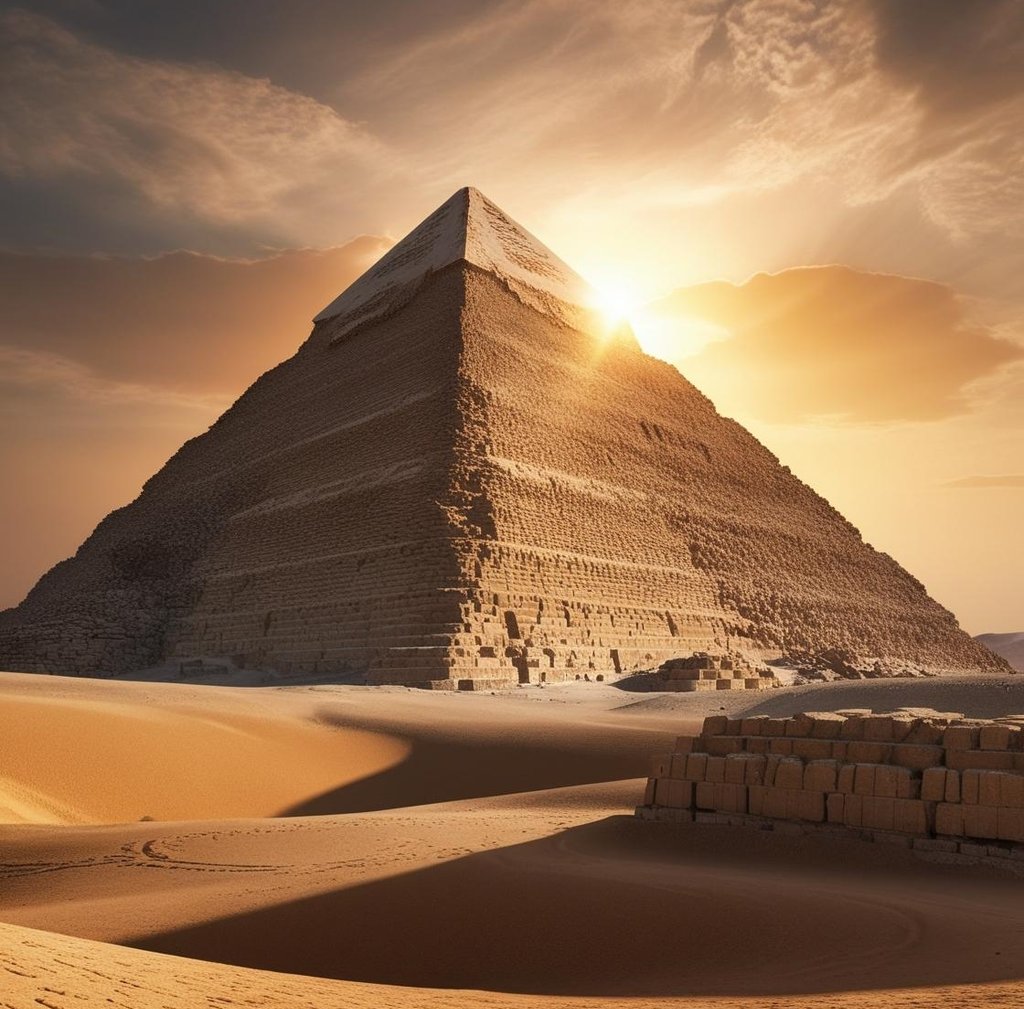Rethinking the Purpose of the Great Pyramid
The Great Pyramid of Giza is not just an architectural marvel but also a beacon of mystery and intrigue. Traditionally labeled as a tomb for Pharaoh Khufu, recent advancements and discoveries challenge this conventional perspective. As we navigate through the sands of time, this ancient wonder may hold secrets that could reshape our understanding of history and humanity’s technological capabilities. Discovering the Hidden Chamber
HUMAN ORIGINS?
Nigel John Farmer
11/28/20242 min read


In 2016, a significant discovery was made using muon scanning technology, which revealed a large hidden chamber above the Grand Gallery in the Great Pyramid. Despite its potential to unlock new insights, this chamber remains unexplored, sparking curiosity and speculation. What might lie within? Could it contain ancient technologies or artifacts that defy our current understanding of the past?
The stagnation in exploration raises questions. Why has there been no effort to investigate further? Is it deliberate, or are there logistical challenges preventing access? The mystery of this chamber invites us to reconsider not only the pyramid's construction but also its purpose.
Beyond Conventional Construction Techniques
The construction of the Great Pyramid is a topic of endless debate. The traditional theory that massive stones were transported using cedar wood from Lebanon has been increasingly challenged due to the wood's insufficient strength for such immense loads. This has led to fascinating speculations about advanced, lost technologies that ancient Egyptians might have possessed.
Some researchers propose that sophisticated methods were employed, possibly involving levitation or unknown mechanisms that remain hidden beneath the sands of time. These theories suggest a level of engineering prowess that rivals or even surpasses modern capabilities.
Exploring the Pyramids True Purpose
While the Great Pyramid has long been considered a royal tomb, its stark, undecorated interior and the absence of soot marks prompt alternative hypotheses. Unlike the richly adorned tombs in the Valley of the Kings, the pyramid's interior lacks hieroglyphic inscriptions and evidence of traditional lighting methods.
Some theorists argue that the pyramid could have served as a power generator or even a facility for DNA restoration. Although speculative, these ideas reflect a longing to understand the full scope of ancient Egyptian knowledge and the possibility of technological sophistication lost to history.
The Conservation vs. Exploitation Dilemma
In recent years, there has been a shift from extensive archaeological excavation to a focus on conservation, sparking debate among scholars and enthusiasts. While preserving these historical sites is crucial, critics argue that it limits opportunities for new discoveries, potentially stifling our understanding of ancient civilizations.
The decision to prioritize conservation over active exploration has led to accusations of suppressing knowledge. Some speculate that powerful interests might prefer to keep certain discoveries hidden, fearing their potential to disrupt established historical and economic paradigms
The Global Context: Shared Symbols and Knowledge
The enigmatic symbol of the swastika, found across various ancient cultures, hints at a wider network of shared knowledge. Its early appearances in the Indus Valley and Neolithic Europe symbolize prosperity and well-being, suggesting interconnections among prehistoric civilizations.
Additionally, advanced sites such as GöbekliTepe and Derinkuyu in Turkey provide further evidence of sophisticated prehistoric societies. These sites, along with the mysteries of the Great Pyramid, challenge our understanding of ancient technologies and global interactions.
Conclusion: A Call for Transparency and Exploration
The Great Pyramid of Giza continues to be a source of fascination and mystery, urging us to rethink its purpose and significance. As we strive to uncover its secrets, there is a growing call for transparency in archaeological research. By embracing a spirit of open exploration, we might unlock hidden truths about our ancestors and reshape modern perceptions of history.
The journey to understanding the Great Pyramid is far from over. Whether it reveals forgotten technologies or serves as a testament to human creativity, this ancient wonder invites us to explore with curiosity and an open mind. The possibilities of what we might discover are boundless, sparking a sense of wonder about the past and its potential to inform our future.
Nigel John Farmer

© 2024~2025 MeditatingAstronaut.com - All Rights Reserved Worldwide
website by Meditating Astronaut Publishing
